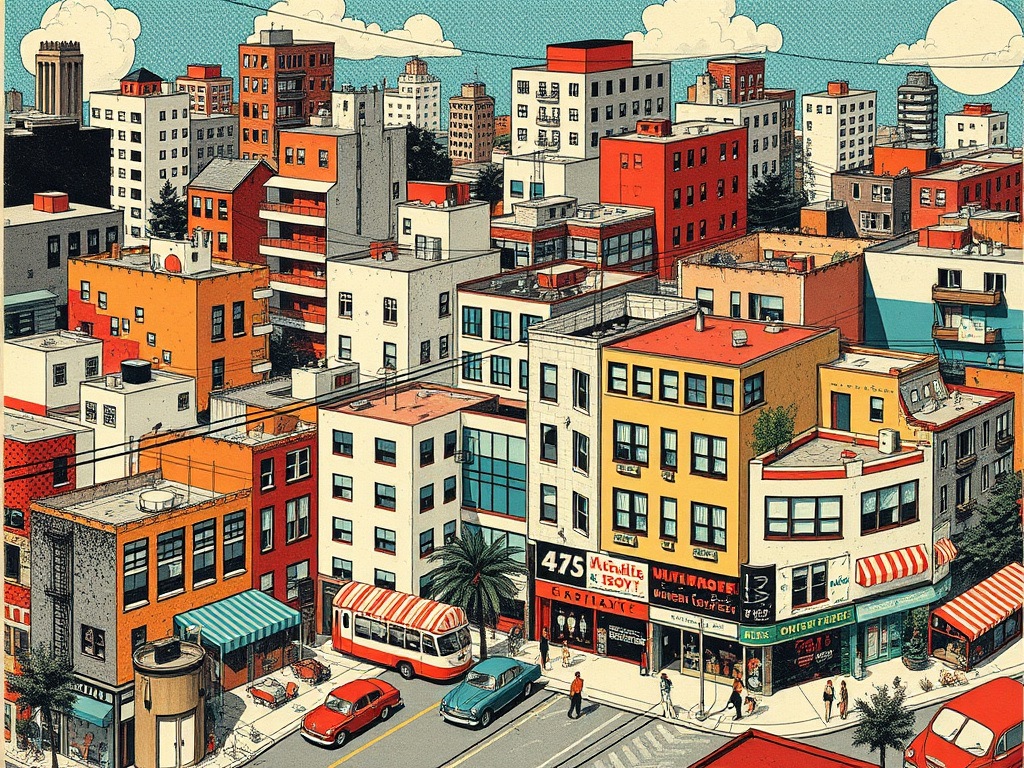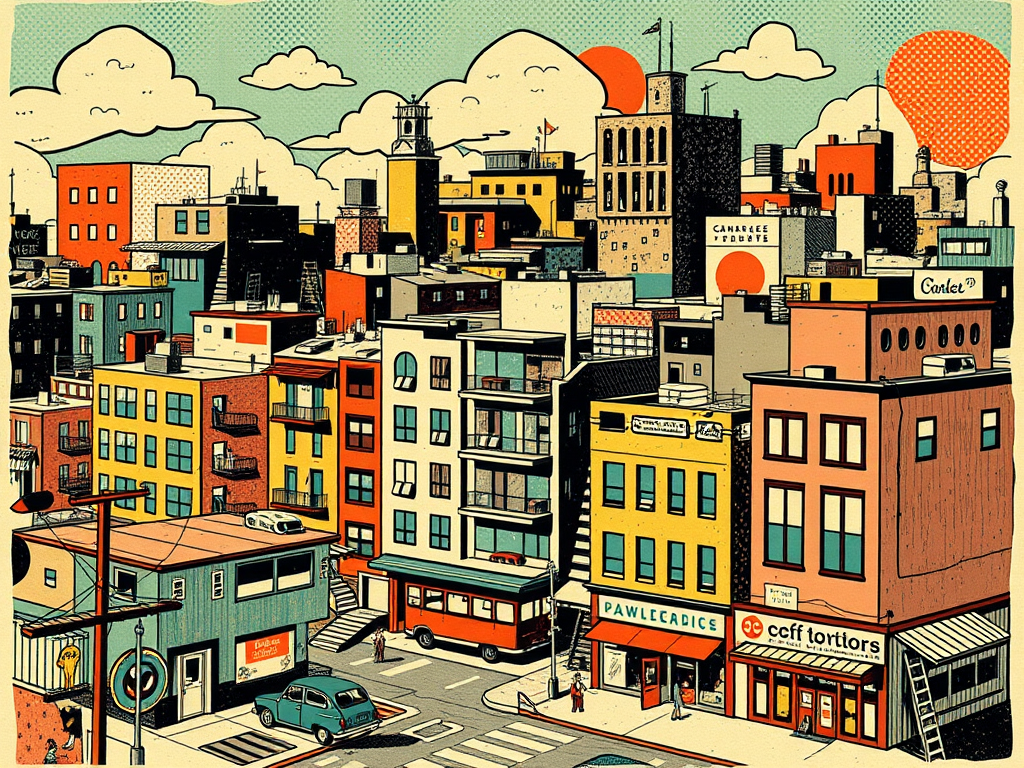
Mixed-Use Developments: Urban Renewal Projects Transforming Greek Cities
Reading time: 15 minutes
Table of Contents
- Introduction to Mixed-Use Developments in Greece
- The Rise of Urban Renewal Projects
- Economic Impact of Mixed-Use Developments
- Case Studies: Successful Greek Urban Renewal Projects
- Challenges and Opportunities in Implementation
- Future Outlook for Greek Cities
- Conclusion
- FAQs
1. Introduction to Mixed-Use Developments in Greece
Greece, a country steeped in ancient history and architectural marvels, is now witnessing a renaissance in urban planning through the implementation of mixed-use developments. These innovative projects are reshaping the landscape of Greek cities, breathing new life into once-neglected areas and creating vibrant, sustainable communities. As we delve into this transformative trend, it’s essential to understand the driving forces behind this urban evolution and its far-reaching implications for Greece’s economic and social fabric.
Mixed-use developments, characterized by their integration of residential, commercial, cultural, and sometimes industrial spaces within a single project, are not a new concept globally. However, their application in the Greek context represents a significant shift in urban planning philosophy. This approach is particularly relevant given Greece’s unique challenges, including economic recovery, population density in urban centers, and the need to preserve historical heritage while embracing modernity.
1.1 Historical Context of Urban Development in Greece
To appreciate the significance of current mixed-use development trends, it’s crucial to consider Greece’s urban development history. Traditional Greek cities, with their narrow streets, bustling markets, and community-centric layouts, inherently embodied many principles of mixed-use design. However, the rapid urbanization of the 20th century led to more segregated urban planning, often resulting in sprawl and less efficient use of space.
The economic crisis that began in 2008 further exacerbated urban challenges, leaving many areas in disrepair and stalling development projects. However, this period of economic hardship also presented an opportunity for reflection and reimagination of urban spaces, setting the stage for the current wave of mixed-use developments.
2. The Rise of Urban Renewal Projects
Urban renewal projects in Greece are gaining momentum as a response to multiple factors: the need for economic revitalization, the desire to create more sustainable and livable cities, and the opportunity to repurpose underutilized or abandoned spaces. These projects are not merely about constructing new buildings; they represent a holistic approach to urban regeneration that considers social, economic, and environmental factors.
2.1 Key Drivers of Urban Renewal in Greece
- Economic Recovery: Post-crisis, there’s a strong impetus to attract investment and create jobs through large-scale development projects.
- Sustainability Goals: Greece is committed to meeting EU sustainability targets, driving the adoption of green building practices and efficient urban design.
- Tourism Evolution: The tourism industry, a cornerstone of the Greek economy, is evolving to demand more integrated and authentic urban experiences.
- Demographic Shifts: Changing population dynamics, including an aging population and urban migration, necessitate new approaches to housing and community design.
These drivers have converged to create a fertile ground for mixed-use developments that can address multiple urban challenges simultaneously.
3. Economic Impact of Mixed-Use Developments
The economic implications of mixed-use developments in Greece are profound and multifaceted. These projects are not just changing the physical landscape of cities; they’re reshaping local economies and creating new paradigms for urban living and working.
3.1 Job Creation and Economic Stimulation
Mixed-use developments are significant job creators, both during the construction phase and in their ongoing operation. A single large-scale project can generate thousands of jobs across various sectors, from construction and architecture to retail and hospitality. This job creation has a ripple effect on the local economy, stimulating spending and further economic activity.
For instance, the Hellinikon project in Athens, one of Europe’s largest urban regeneration efforts, is expected to create 75,000 jobs during its development and operation phases. This massive injection of employment opportunities is crucial for a country still recovering from economic challenges.
3.2 Attracting Foreign Investment
These ambitious urban renewal projects are catching the eye of international investors, bringing much-needed foreign capital into the Greek economy. The combination of attractive real estate opportunities, potential for high returns, and the allure of the Greek lifestyle is proving to be a powerful draw for global investors.
Moreover, programs like the greece investor visa are further incentivizing foreign investment in Greek real estate, including mixed-use developments. This influx of international capital is not only fueling development but also contributing to the country’s economic recovery and growth.
3.3 Revitalizing Local Businesses
Mixed-use developments create ecosystems that support local businesses. By combining residential, commercial, and recreational spaces, these projects ensure a constant flow of foot traffic, benefiting retailers, restaurants, and service providers. This integrated approach to urban planning can breathe new life into struggling business districts and create thriving local economies.
4. Case Studies: Successful Greek Urban Renewal Projects
To truly understand the impact of mixed-use developments in Greece, it’s valuable to examine specific projects that exemplify this trend. These case studies illustrate the diverse approaches to urban renewal and the transformative effect they can have on cities.
4.1 The Hellinikon Project, Athens
The Hellinikon project, situated on the site of Athens’ former international airport, is a prime example of large-scale urban renewal. This €8 billion development spans 620 hectares and includes:
- Residential areas with a mix of housing types
- A metropolitan park spanning 200 hectares
- Commercial spaces including offices, retail, and hotels
- Educational and research facilities
- Sports and recreation areas
This project is not just transforming a disused airport; it’s creating a new city within a city, demonstrating the potential of mixed-use developments to completely reimagine urban spaces.
4.2 Thessaloniki’s ConfEx Park
In Thessaloniki, Greece’s second-largest city, the ConfEx Park project is revitalizing the city’s exhibition center area. This development includes:
- A state-of-the-art conference center
- Hotel accommodations
- Commercial and office spaces
- Public green areas and recreational facilities
By combining business, leisure, and public spaces, this project is positioning Thessaloniki as a major events and business tourism destination while enhancing the quality of life for local residents.
5. Challenges and Opportunities in Implementation
While the potential of mixed-use developments in Greece is immense, their implementation is not without challenges. Understanding these hurdles and the opportunities they present is crucial for the successful execution of urban renewal projects.
5.1 Regulatory and Bureaucratic Obstacles
One of the primary challenges in implementing mixed-use developments in Greece is navigating the complex regulatory environment. Zoning laws, building codes, and permitting processes can be time-consuming and sometimes contradictory. However, this challenge also presents an opportunity for regulatory reform. As these projects gain momentum, there’s increasing pressure on authorities to streamline processes and create more favorable conditions for urban development.
5.2 Balancing Preservation and Progress
Greece’s rich historical heritage adds another layer of complexity to urban renewal efforts. Striking the right balance between preserving historical sites and allowing for modern development is a delicate task. Successful projects must find ways to integrate heritage elements into new developments, creating a harmonious blend of old and new. This challenge can lead to innovative design solutions that enhance the unique character of Greek cities.
5.3 Financing and Investment Challenges
Securing funding for large-scale urban renewal projects can be challenging, especially given Greece’s recent economic history. However, this challenge has spurred creative financing solutions, including public-private partnerships, international investment consortiums, and the utilization of EU development funds. The success of initial projects is also building investor confidence, potentially easing financing challenges for future developments.
6. Future Outlook for Greek Cities
As mixed-use developments continue to reshape Greek urban landscapes, the future outlook for cities is both exciting and transformative. These projects are not just changing the physical environment; they’re redefining the very concept of urban living in Greece.
6.1 Sustainable Urban Growth
The integration of sustainable practices in mixed-use developments is setting a new standard for urban growth in Greece. Future projects are likely to place even greater emphasis on energy efficiency, green spaces, and sustainable transportation options. This shift towards sustainability is not just environmentally responsible; it’s also making Greek cities more attractive to both residents and tourists who are increasingly conscious of environmental issues.
6.2 Tech Integration and Smart Cities
The next wave of urban renewal projects in Greece is likely to incorporate smart city technologies. From integrated public transportation systems to IoT-enabled infrastructure, these developments will make Greek cities more efficient and livable. This technological integration could position Greece as a leader in smart urban development in the Mediterranean region.
6.3 Cultural and Creative Hubs
Mixed-use developments are creating new spaces for cultural expression and creative industries. Future projects are likely to include more dedicated areas for artists, performers, and creative professionals, fostering a vibrant cultural scene that can attract talent and enhance the quality of life in Greek cities.
7. Conclusion
Mixed-use developments and urban renewal projects are ushering in a new era for Greek cities. These initiatives are not just about constructing buildings; they’re about reimagining urban life in a way that is more sustainable, economically viable, and socially enriching. As Greece continues to navigate its economic recovery and urban evolution, these projects stand as beacons of progress and innovation.
The success of these developments will depend on continued collaboration between public and private sectors, innovative financing solutions, and a commitment to balancing progress with preservation. As more projects come to fruition, they will likely inspire further investment and development, creating a positive cycle of urban regeneration across Greece.
The transformation of Greek cities through mixed-use developments represents more than just physical change; it’s a shift in how urban spaces are conceived and utilized. This approach to urban planning holds the promise of creating more resilient, vibrant, and sustainable cities that can meet the challenges of the 21st century while honoring Greece’s rich historical legacy.
8. FAQs
Q1: How are mixed-use developments changing the Greek real estate market?
A1: Mixed-use developments are diversifying the Greek real estate market by creating multi-functional spaces that combine residential, commercial, and leisure areas. This is attracting a wider range of investors and changing how property value is assessed in urban areas.
Q2: What role does sustainability play in these urban renewal projects?
A2: Sustainability is a key focus in modern mixed-use developments in Greece. These projects often incorporate green building practices, energy-efficient designs, and sustainable urban planning principles to meet EU environmental targets and create more livable cities.
Q3: How are historical preservation concerns addressed in urban renewal projects?
A3: Developers are finding innovative ways to integrate historical elements into new projects, often preserving facades or entire structures within the development. This approach helps maintain the city’s cultural heritage while allowing for modern amenities and design.
Q4: What impact are these developments having on local communities?
A4: Mixed-use developments are often revitalizing local communities by creating new job opportunities, improving infrastructure, and providing diverse living and working spaces. They can also increase property values and attract new businesses to the area.
Q5: How can foreign investors participate in Greek urban renewal projects?
A5: Foreign investors can participate through direct investment in development projects, real estate acquisitions, or through investment funds focused on Greek urban development. Programs like the Greece Golden Visa also provide opportunities for non-EU investors to invest in Greek real estate and gain residency benefits.

Article reviewed by Enzo Almeida, Business Scaling Expert | Growth Strategist | Driving Expansion in Emerging Markets, on March 14, 2025
